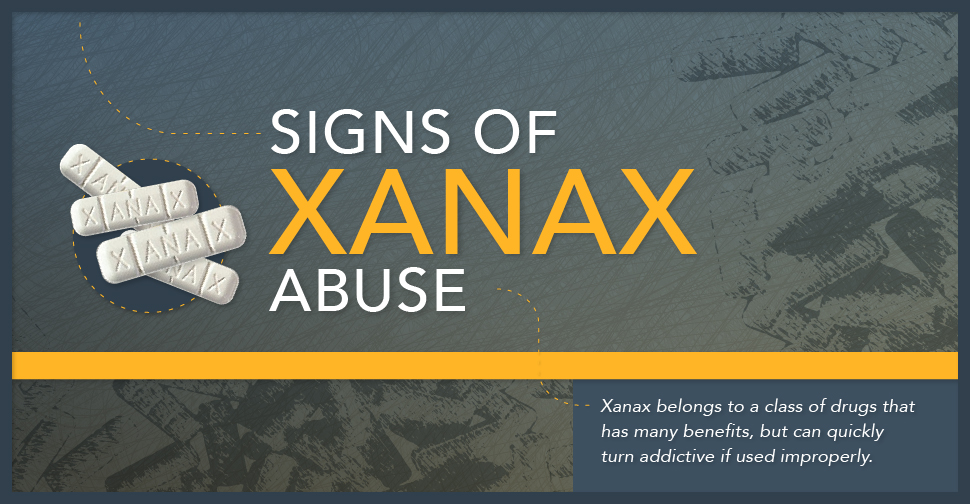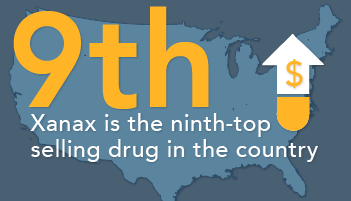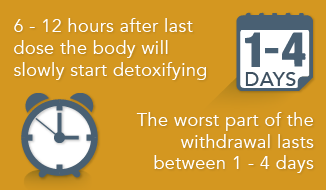
When used properly, Xanax is a powerful anti-anxiety medicine, but unfortunately, its addictive nature makes it a potential problem for millions of people across the country. Understanding this drug, how addiction to it forms, and how it can be beat, is important for anyone who uses it or is worried that a loved one may be developing an addiction.
Proper Use Of Xanax
Xanax is a controlled prescription drug that is used to help calm anxiety symptoms and treat panic disorder. It is classified as a benzodiazepine, which works on the production of a neurotransmitter in the brain called gamma-aminobutyric acid or GABA. It boosts the natural ability of GABA in slowing down the activity of the neurons in the brain that are responsible for creating the feelings attributed to anxiety. This results in decreased mental activity of this kind, slowing down the “rushing” thoughts of anxiety and making it easier to think straight and avoid excessive anxiety.
Due to its addictive nature, it is typically only prescribed in the smallest possible dose and in cases of panic disorder or generalized anxiety. Symptoms of the latter include trembling, twitching, muscle tension, aches, restlessness, short breath, heart palpitations, clammy hands, dry mouth, dizziness, nausea, being easily started, problems with concentration, insomnia, irritability, and others.

Taken according to prescription, Xanax has a low probability of addiction. However, physical dependence can result from prescribed use, thus, abruptly quitting the drug can lead to withdrawal symptoms, making a physican-supervised and monitored decrease important. It should not be taken with alcohol, during pregnancy, or with other substances. Dosage should not be increased without a doctor’s approval, as this increases the chance of addiction and overdose.
Why Xanax Is Abused
Xanax is considered one of the most addictive prescription drugs in the world for a variety of reasons. It acts quickly, often going into effect in minutes and creates a sedating “high” that has been described as similar to the effects of alcohol. Other facts that explain why Xanax is abused include:
- Xanax is heavily prescribed – It is the ninth-best selling drug in the country (with prescription rates jumping 9 percent every year), making it easier to obtain than other drugs in its class.
- Increased doses – There is a chance that the Xanax dosage may need to be increased to make it more effective, which could increase the risk of addiction and cause dependence and abuse.
- Belief that it is safer to use – Studies have found that 50 percent of teens who abuse prescription drugs believe that it is safer than using illicit substances, such as heroin or cocaine.
- Can be mixed with other substances – Former baseball player Daryl Strawberry admitted to adding Xanax to other drugs to enhance their effects. In another case, former Washington D.C. mayor Marion Barry (who struggled with addiction during his time in politics) admitted that he was addicted to Xanax and used it for the same purpose as Strawberry. Keep in mind, any time you mix more than one drug together, the risk and danger increases.
- Inexpensive form of self-medication – Those who suffer from anxiety who can’t afford a prescription may find Xanax more cheaply on the street, including prices as low as $1 per pill.
Whatever the reason for Xanax abuse and addiction, it is important to know how to spot it. In this way, you can determine whether or not you or a loved one is suffering from an addiction, and take the appropriate steps to stop it from progressing any further.
Signs And Symptoms Of Xanax Abuse And Addiction
Improper or excessive use of Xanax will cause a variety of physical and mental symptoms, and changes in a person’s behavior. These signs and symptoms will vary in severity depending on the amount of Xanax abused and the magnitude of the addiction. Signs that a loved one may be abusing Xanax or suffering from addiction include:
- Poor coordination that can’t be explained by another condition
- Trouble concentrating and difficulty remembering incidents
- “Blackouts” or instances of lost time
- An extremely relaxed nature that verges on drowsiness or sleepiness
- Hoarding Xanax or asking friends and family for prescriptions
- Impulsive behavior that can become aggressive and hostile
- Onset of depression or an increase in the symptoms associated with it
- Emotional distance or indifference to life events
- Increasing use or asking the doctor to boost the dose repeatedly
- Discussing Xanax constantly and fearing what will happen if it runs out
- Increased anxiety symptoms when use is halted or decreased (could be signs of withdrawal)
- Symptoms of withdrawal, such as nausea, vomiting, shaking hands, confusion, agitation, and frustration
Withdrawal is a harsh and difficult process for many to experience, and it may cause continual use in those who want to avoid it. Understanding the severity of Xanax withdrawal and its timeline can help you to better understand what your loved one may be experiencing.
The Potency Of Xanax Withdrawal
During the first six to twelve hours after a person ceases using Xanax, the body will slowly start detoxifying and start causing multiple withdrawal symptoms. Minor symptoms, such as anxiety and irritability are likely. The most potent stage lasts from one to four days after ceasing use. This includes a high level of anxiety often paired with insomnia. Severe muscle pain, sweating, and other symptoms are likely.
 After the fourth day of withdrawal, the symptoms should begin to decrease. That said, recurrence of sudden and severe anxiety, as well as physical pain, may still occur for up to two weeks. Protracted withdrawal symptoms, however, may last up to two years. The onset of protracted withdrawal symptoms isn’t inevitable, but it is something to note.
After the fourth day of withdrawal, the symptoms should begin to decrease. That said, recurrence of sudden and severe anxiety, as well as physical pain, may still occur for up to two weeks. Protracted withdrawal symptoms, however, may last up to two years. The onset of protracted withdrawal symptoms isn’t inevitable, but it is something to note.
Other symptoms that can occur during Xanax withdrawal include depression, difficulties with concentration, convulsions, hallucinations, severe headaches, troubles with memory, sudden emotional shifts, nightmares, heart palpitations, panic attacks caused by extreme anxiety, seizures, suicidal thoughts, and even temporary psychosis.
The worst of these symptoms are usually caused by a sudden halt in Xanax use. A medically managed decrease in dosage is the best way to avoid these dangerous symptoms. It is even possible to manage some of the protracted symptoms, such as cognitive deficits, tinnitus (ringing in the ears), and tingling sensations in the extremities through various recovery methods.
Xanax Addiction Treatment Methods
A medically-controlled withdrawal from Xanax is the first step in recovering from addiction. Generally, decreasing doses of diazepam (no more than 40 milligrams) will be introduced into the body to decrease withdrawal severity. In some cases, drugs such as Klonopin and Tegretol are used to decrease the severity of symptoms and help manage the emotional difficulty of withdrawal.
When diazepam is used, the length of time between dose reduction will be carefully monitored based on the presence of withdrawal symptoms. A week is typical between reductions, though longer or shorter may be necessary depending on the extent of the symptoms. One to four weeks may be required for this process to be successful.
Managed withdrawal of this type is just the first step in recovery. Next is addressing the anxiety that led to the use of Xanax. A non-benzodiazepine anxiety medicine, such as BuSpar may be prescribed. In some instances, anti-depressants may be appropriate, as many of these typically also decrease anxiety. Eliminating anxiety is an important step in increasing the person’s quality of life and ensuring continued sobriety from their drug of abuse.
Behavior-adjustment techniques, such as cognitive behavioral therapy, may also be implemented. Techniques to cope with anxiety that naturally and effectively decrease symptoms without the use of medicines will be taught here. After addressing anxiety, however, it is important to check for any other mental health concerns that may contribute to addiction.
Psychological assessment by skilled psychiatrists can help identify these problems and work through them in a constructive way. It can also help teach relapse-fighting techniques that can break the psychological compulsion to use Xanax for relaxation or pleasure.
Last is the use of aftercare techniques to ensure sobriety from Xanax. These techniques include education on the impact of Xanax, 12-step programs, and sobriety groups for when the cravings get too strong. New sober activities will also be taught, including adventure therapy sessions.
Treating addiction holistically in this method is a proven and effective way to beat addiction to Xanax. It requires focus and dedication, but it can be done.
Learning To Live Life Without Xanax
 Beating Xanax addiction requires a lot of personal strength and dedication, but it’s something that is possible for anyone determined to quit. If you need help finding a drug rehab center near you, or simply need to hear a friendly voice that understands your concerns, please contact us today at DrugRehab.org. We can help get you or a loved one get started on the path to sobriety today.
Beating Xanax addiction requires a lot of personal strength and dedication, but it’s something that is possible for anyone determined to quit. If you need help finding a drug rehab center near you, or simply need to hear a friendly voice that understands your concerns, please contact us today at DrugRehab.org. We can help get you or a loved one get started on the path to sobriety today.
Sources
Medical News Today – Xanax: Side Effects, Drug Information
Benzo.org – Xanax Often Abused For Easy ‘High’
Health Research Funding – 20 Profound Xanax Addiction Statistic
Healthline – The Most Addictive Prescription Drugs On The Market
Athens Banner Herald – Strawberry Arrested Yet Again
Pipe Dream Blues: Racism And The War On Drugs
American Family Physician – Addiction: Part I. Benzodiazepines—Side Effects, Abuse Risk And Alternatives
Mental Health Daily – Xanax (Alprazolam) Withdrawal Symptoms + Timeline
National Center For Biotechnology Information – Clinical Guidelines For Withdrawal Management And Treatment Of Drug Dependence In Closed Settings
PsychCentral – Medications For Anxiety, Panic, And Phobias

